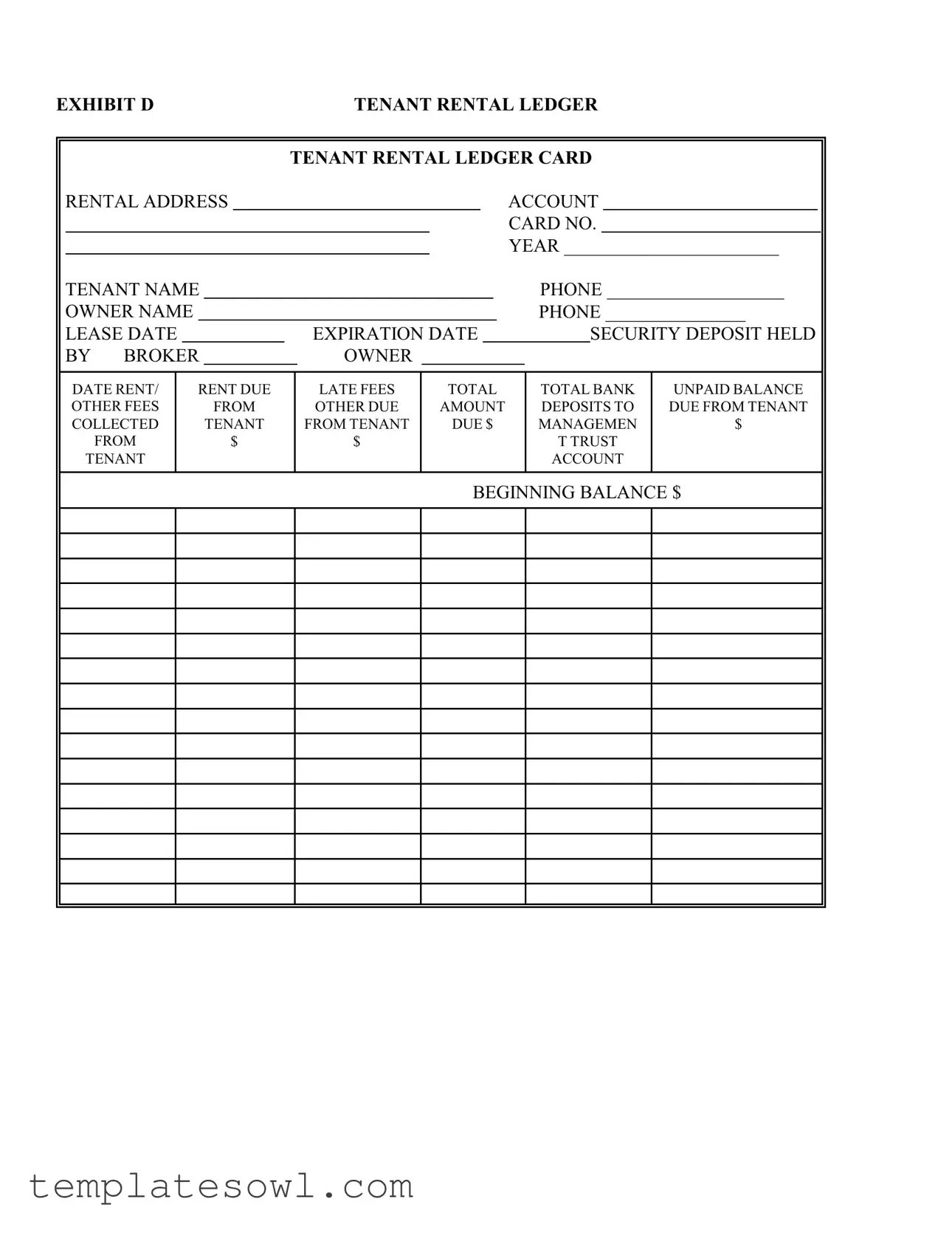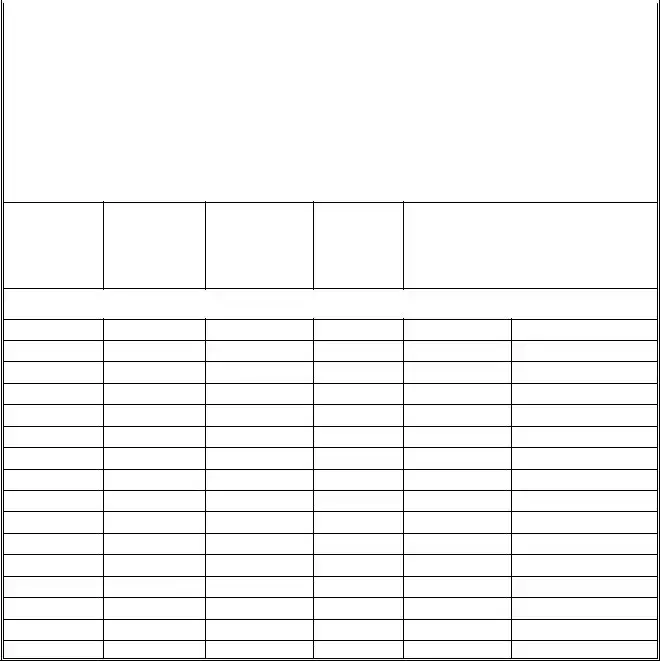What is the purpose of the Tenant Ledger Card form?
The Tenant Ledger Card form serves as a comprehensive record of all transactions between a tenant and their landlord or property management. It includes important details such as the names of both the tenant and the owner, the rental address, lease dates, and any associated fees. This form helps track rent payments, late fees, and security deposits, ensuring that both parties have a clear and documented history of their financial dealings.
What information is included in the Tenant Ledger Card?
The Tenant Ledger Card contains vital data that outlines the financial relationship between the tenant and the property owner. Key components include the tenant's name and contact information, owner's contact information, lease start and expiration dates, and details about the security deposit. Additionally, it lists the rent due, late fees, other charges, total amounts due, and any outstanding balances. This information allows for transparency and accountability.
How can I use the Tenant Ledger Card to resolve disputes?
If a dispute arises between a tenant and a landlord, the Tenant Ledger Card can act as an important piece of evidence. It provides a documented history of payments made, late fees charged, and other financial obligations. By reviewing this ledger, both parties can clarify any misunderstandings regarding rent payments or fees. In cases where further action is needed, this document may be useful in negotiations or legal proceedings.
Who is responsible for maintaining the Tenant Ledger Card?

